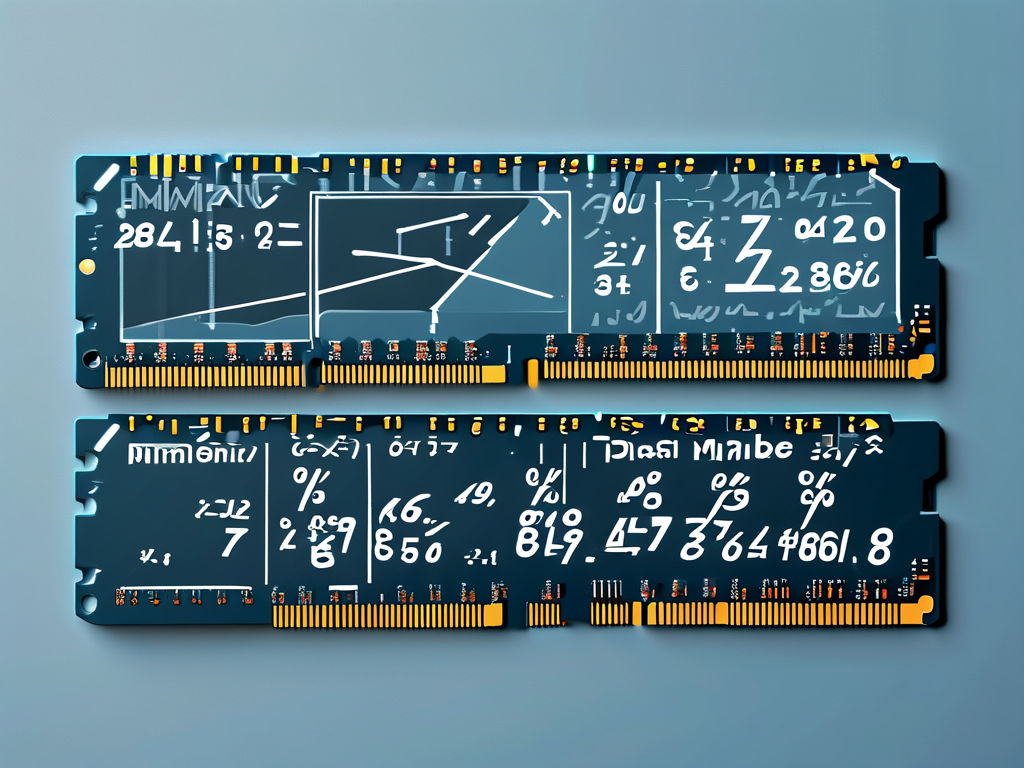Memory bandwidth serves as a critical performance metric in modern computing systems, determining how quickly data can move between processing units and memory. To optimize system performance, engineers and developers must understand how to calculate this value accurately. This article explores the mathematical formula behind memory bandwidth calculations, explains its components, and provides practical examples to demonstrate its application.
The Core Formula
The standard formula for calculating memory bandwidth is:
Bandwidth = (Clock Frequency × Data Bus Width × Channels × Multiplier) ÷ 8 This equation converts raw hardware specifications into a meaningful throughput value measured in bytes per second (B/s). Let’s break down each component:
- Clock Frequency: Measured in MHz or GHz, this represents how many cycles the memory completes per second. For DDR (Double Data Rate) memory, the effective clock speed is typically double the base frequency.
- Data Bus Width: The number of bits transferred per cycle, usually 64 bits for modern DIMMs.
- Channels: The number of parallel memory channels (e.g., single-, dual-, or quad-channel configurations).
- Multiplier: A factor accounting for DDR technology (e.g., 2 for DDR4/DDR5 due to double pumping).
The division by 8 converts bits to bytes, as bandwidth is conventionally expressed in bytes.
Practical Implementation
Consider a DDR4 RAM module with a base clock speed of 1,600 MHz operating in dual-channel mode:
clock_frequency = 1600e6 # 1,600 MHz
bus_width = 64 # 64-bit bus
channels = 2 # Dual-channel
multiplier = 2 # DDR4 doubles data rate
bandwidth = (clock_frequency * bus_width * channels * multiplier) / 8
print(f"Bandwidth: {bandwidth / 1e9:.2f} GB/s")
Output:
Bandwidth: 51.20 GB/s This matches the theoretical maximum of DDR4-3200 in dual-channel mode, demonstrating the formula’s accuracy.

Why the Formula Matters
System designers use this calculation to:

- Balance CPU-GPU-memory performance in workstations
- Identify bottlenecks in data-intensive applications like AI training
- Validate marketing claims about memory hardware
For example, a mismatch between a GPU’s 448 GB/s bandwidth and a system’s 50 GB/s RAM throughput creates performance limitations.
Advanced Considerations
- Real-World Variance: Actual bandwidth often falls 10–25% below theoretical values due to signaling overhead and protocol inefficiencies.
- Latency vs. Bandwidth: Lower latency can sometimes compensate for moderate bandwidth limitations in latency-sensitive tasks.
- Non-Volatile Memory: Technologies like Optane require adjusted calculations due to different access patterns.
Debugging Bandwidth Issues
Developers can use tools like Intel’s MLC or NVIDIA’s bandwidthTest to measure real-world performance:
// Sample CUDA bandwidth test snippet cudaMemcpyAsync(devicePtr, hostPtr, size, cudaMemcpyHostToDevice); cudaEventRecord(start); // ... perform memory operations ... cudaEventRecord(stop); cudaEventElapsedTime(&ms, start, stop); double bw = (size * 1e-9) / (ms * 1e-3); // GB/s
Industry Trends
Emerging technologies are pushing bandwidth calculations to new extremes:
- GDDR6X: Uses PAM4 signaling to achieve 21 Gbps/pin
- HBM3: Stacks 12-hi DRAM layers for 819 GB/s per stack
- CXL 3.0: Introduces memory pooling with coherent bandwidth sharing
These advancements require updated versions of the classic formula to account for 3D stacking and protocol enhancements.
Mastering memory bandwidth calculations empowers professionals to make informed hardware decisions and optimize system architectures. While the core formula remains straightforward, its intelligent application requires understanding both the mathematical principles and real-world implementation nuances. As memory technologies evolve, so too must our approaches to quantifying and leveraging their capabilities.









